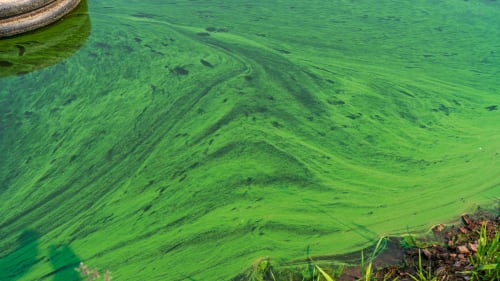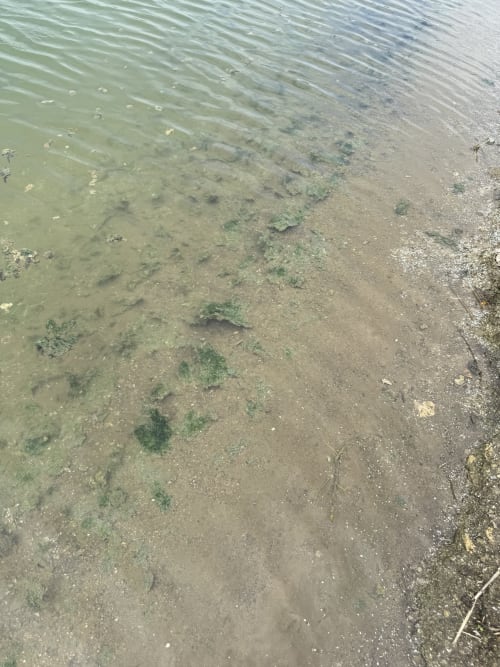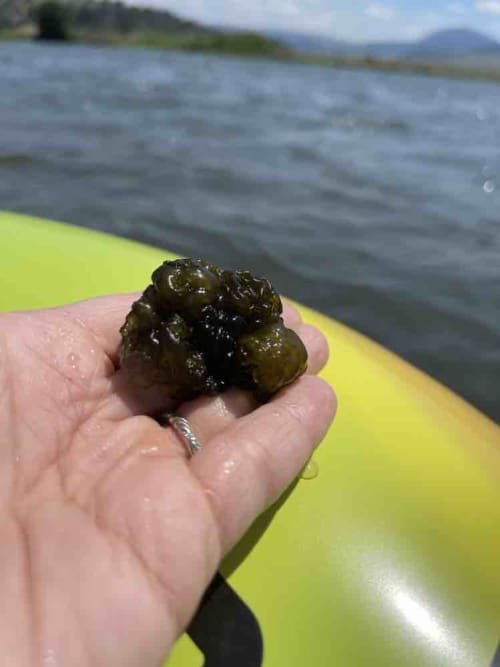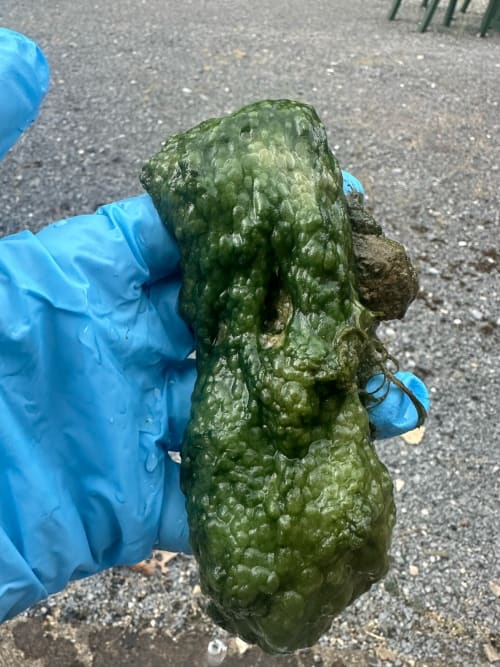Worried your “green scum” could be cyanobacteria?
Cyanobacteria can produce toxins that threaten people, pets, and wildlife—and you can’t confirm it by sight. Act smart: keep pets away, reduce nutrients, and send a sample for FREE lab screening.
Cyanobacteria risks—fast facts
- Toxins can harm people, pets, livestock, and wildlife—even small exposures can be serious.
- Looks can deceive: cyanobacteria can mimic harmless algae; microscopy confirms the difference.
- Dried scums can stay risky: toxins may persist on the shoreline and re-enter the water.
- Treatment timing matters: killing an active bloom can release toxins—start prevention while you wait for lab results.
What to look for (submit a sample to confirm)

“Green paint” slicks / powdery film (surface)
Forms floating surface scums; common in warm, nutrient-rich, calm water and collects along leeward shores.

Dark benthic mats / hair-like strands
Grows as cohesive bottom mats; gas-lifted clumps can surface and drift to windward banks.

Jelly-like green blobs
Gel colonies in quiet shallows; feels slippery/jelly-like and may expand after rains.

Dense, tough bottom mats (often very dark)
Thick, hair-like mats on the bottom; rubbery clumps can tear loose and collect in coves.
Safe preventive steps (to start now)
- Keep people & pets away from suspect water and shorelines.
- Run or install aeration to boost oxygen and circulation.
- Shade the water with pond dye to limit sunlight that fuels growth.
- Cut phosphorus — bind phosphate now to remove a key algae food source.
- Add beneficial bacteria to digest organics and consume excess nutrients.
- Document conditions — photos, wind, and weather notes help tailor a plan.
Phosphate Binder (MetaFloc)
Biological clarifier that permanently binds phosphorus; improves clarity.
Shop MetaFlocFree Cyanobacteria Screening — simple & expert-reviewed
- Add to cart and finish checkout to get the sampling PDF instantly.
- Collect & ship your sample as instructed.
- Lab tech review — you’ll receive results with next steps.
Free Pond & Lake Management Catalog (print)
Get our mailed catalog with treatment guides, ID tips, and planning checklists—great to keep at the dock or barn.
Request Free Print Catalog